|

|
Below is an animation
of the second contact of the Venus transit. I missed the first contact
through the webcam because I wasn't exactly sure where on the sun's
disk Venus would appear. I did however witness it visually.
2nd Contact 05:58:40
UT
|
|
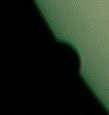
|
|
|
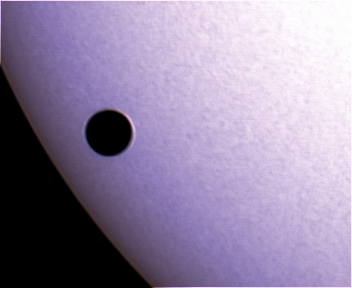
|
This
image was taken a short while after second contact as Venus moved
further onto the sun's disk. Through the telescope the sight looked
positively odd.
I was using my home-made 6" F6 telescope at
Newtonian focus to image. It was extremely difficult to get the light levels
right with the Laptop in the boot of the car.
|
|
|
Below is a photo of my telescope setup. Next to it is an image taken with a digital camera through the (dirty) eyepeice. This gives something of a idea of what it looked like to witness the event first hand. Despite being on a quiet
country lane early in the morning, I had about three passersby stop
and have a look through the telescope.
|
|
Another view shot with the digital camera through the eyepiece.
This was a 26mm eyepiece.
The telescope is a 150mm diameter mirror with a focal ratio of F6. This gives a focal length of 150mm x 6 = 900mm.
The magnification is the Telescopes focal length ÷ Eyepiece focal length.
900mm ÷ 26mm = 34.6 magnification.
|
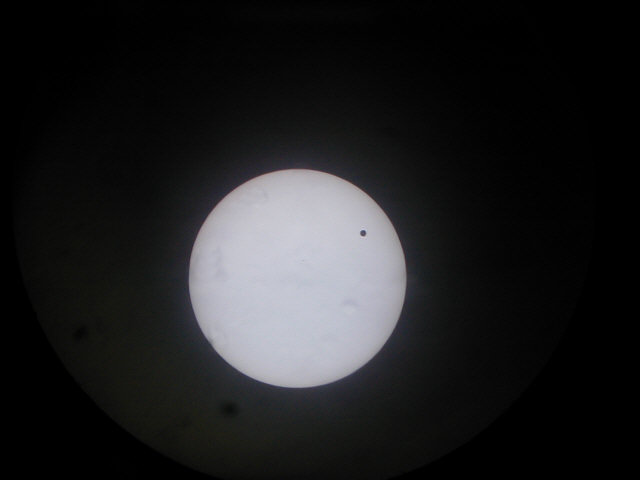 |
|
|
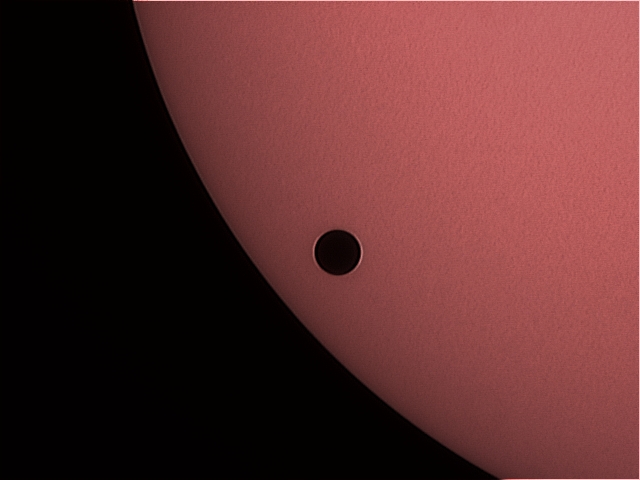
|
A quick swap of filter.
I
thought I'd try a UV filter to see what the Transit looked like.
I didn't expect much change. The only obvious difference is the
colour of the sun's disk. There is a faint ring of light just within
the disk of Venus, but this could just be a processing artifact.
There is also a bright ring around the planet which may be a processing
artifact, but was evident in the original video frames.
|
|
|
This is my not-so-good
attempt at a full disk mosaic. It gives an idea of the view through
the telescope eyepiece. Unfortunately I managed to over expose the
centre of the sun, in most of my images for this composite. Some
of the detail is therefore missing in the centre of the sun. You
can also make out the lines where the different bits of the image
have been joined together.
6" F6 Newtonian.
0.6 focal reducer.
The final mosaiced image was reduced by 50%.
|
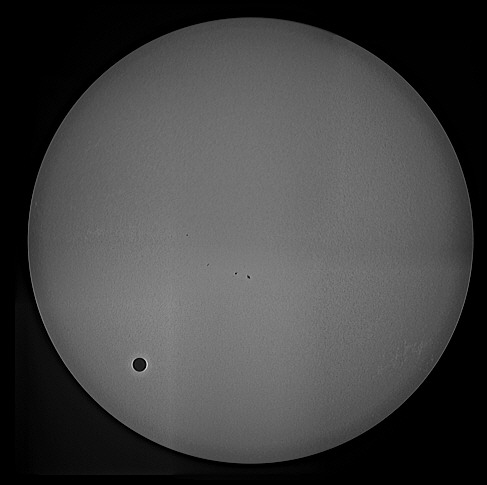
|
|
|
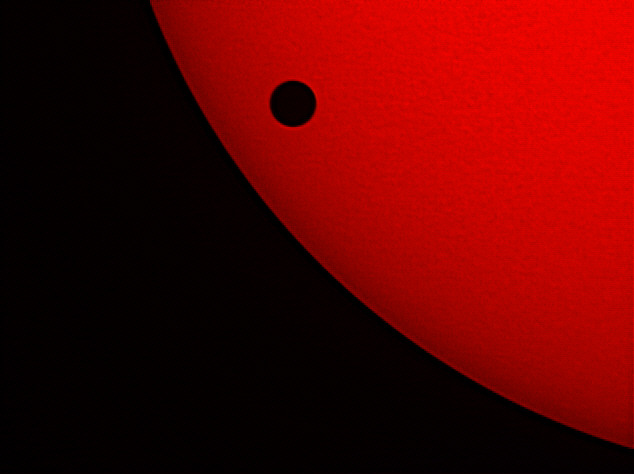
|
I used a combination
of a Red filter, and a Baader UV filter to capture this image. It
doesn't seem to have as noticeable a bright ring around the planet
as some of the other images display, despite a similar amount of
image processing.
|
|
|
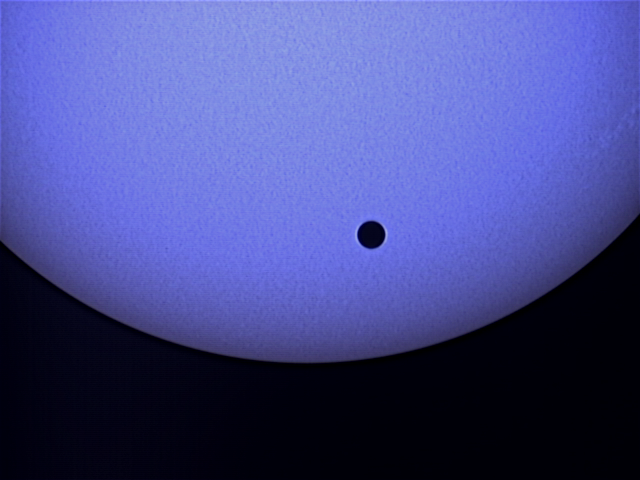
|
This time I used a home-made
IR filter to image the transit. For some reason the ToUcam decided
to colour it blue. I quite like this image. I also used a 0.6 focal
reducer to get a wider field of view.
|
|
|
This was a shot through
my cheap 80mm F5 refractor. A little less well focussed but
a bit more of the sun and those sun spots.
|

|
|
|
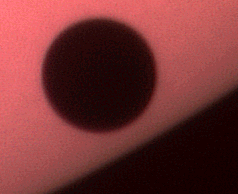
|
The show is nearly over
now. By this time I had moved to the sea front at Weymouth. It took
longer than I thought it would to get to the beach, and install
my family on the beach. I was however just in time to set up the
telescope behind my car and witness the 3rd and 4th contact
as Venus left the sun's disk. The timings were:
3rd contact:
11:22:28 UT. 4th contact: 11:42:12 UT.
I even had time to show
a few people the spectacle before I swapped the eyepiece for the
webcam. About 10 minutes after it was all over, cloud covered the
sun's disk. Phew - what an amazing morning.
|
|
|
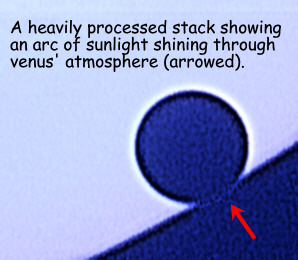
|
After I got home and
had processed my images, I saw some amazing images of Venus on the
internet, showing the sun light shining through the planets atmosphere,
as Venus left the suns disk. Some of these were breath-taking and
very clear. I was disappointed that the settings I had used wouldn't
bring out this detail. However, not to be out done, I tried to heavily
process what I had got and was rewarded with the image opposite.
It is very 'noisy' but clearly shows the sun shining through the
atmosphere of the planet. Oddly, the more you stare at it the more
you wonder if it isn't just noise in the picture. Turn away and
look back and it's obvious again what is causing the arc of light.
|
|



